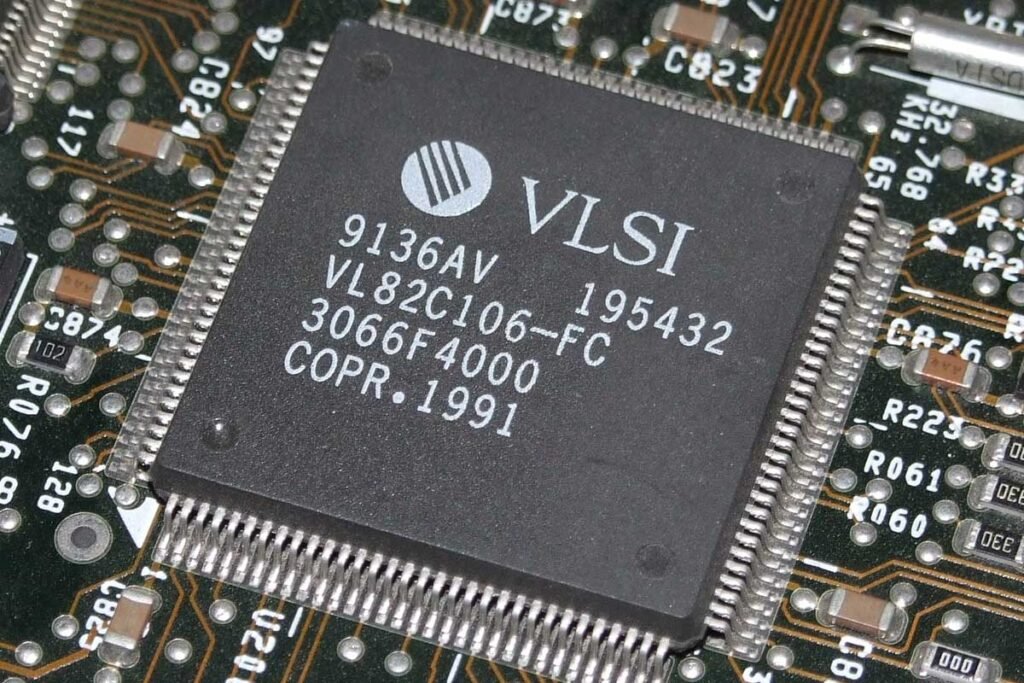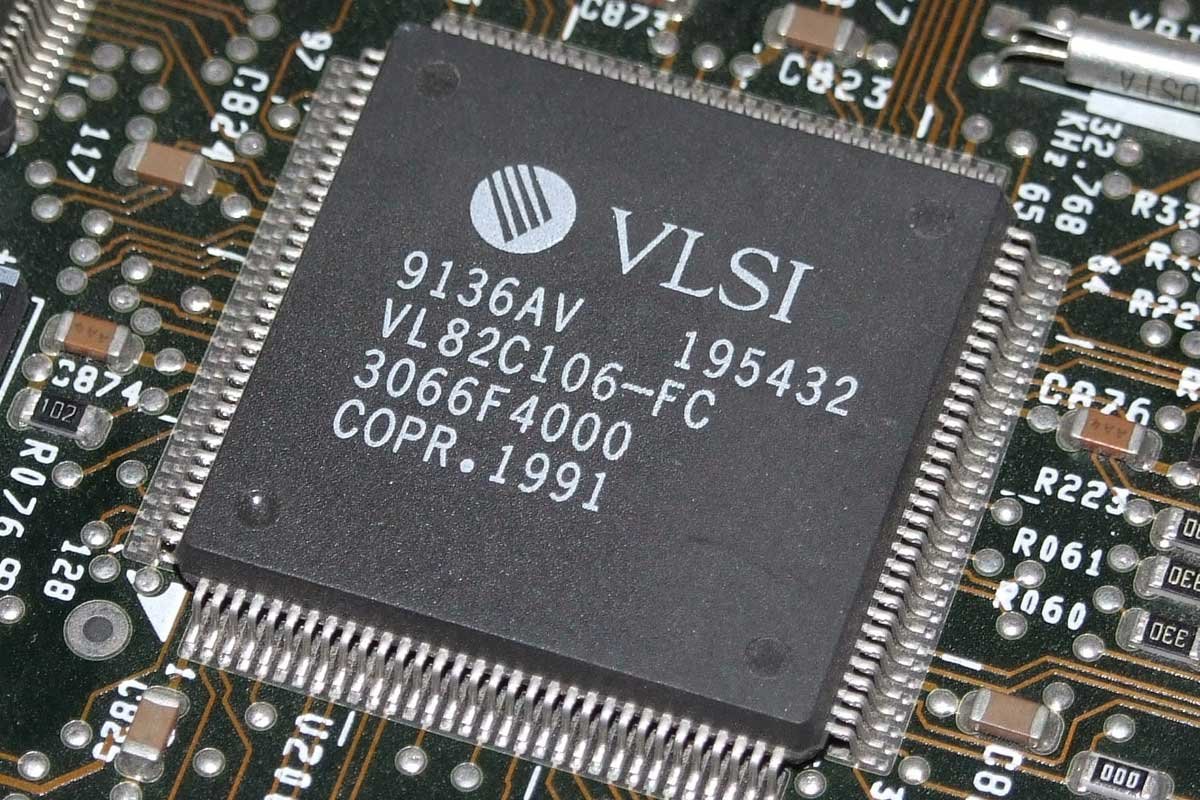VLSI (Very-Large-Scale Integration) technology is changing quickly, driving advances across consumer electronics, telecommunications, and computing. With the push for smaller, faster, and more power-efficient chips, the latest trends in VLSI are reshaping how devices perform and connect. Innovations like System-on-Chip (SoC) designs, the rise of 3D Integrated Circuits, and advancements in low-power techniques are leading the way. Additionally, artificial intelligence and machine learning are becoming integral to optimizing VLSI design. This article explores these emerging trends in VLSI technology, highlighting how they transform industries and meet the demands of an increasingly digital and connected world.
What is VLSI technology?
VLSI (Very-Large-Scale Integration) technology refers to the process of creating integrated circuits by combining thousands, or even millions, of transistors onto a single chip. This technology forms the backbone of modern electronics, enabling the production of compact, high-performance devices like smartphones, computers, and smart appliances. VLSI has revolutionized the electronics industry by making it possible to fit immense computing power into small chips, supporting advanced functionality and efficient processing.
A VLSI course can be highly beneficial for gaining a deep understanding of this technology. It covers key aspects like digital and analogue circuit design, chip fabrication, verification, and testing. Such a course helps learners understand the complexities of integrated circuit design, the tools used in designing (like CAD), and how to tackle real-world challenges in the semiconductor industry. By studying VLSI in detail, participants can build skills for careers in chip design, embedded systems, and semiconductor technologies.
Advancement in VLSI technology

VLSI technology has progressed significantly since its inception, driving the evolution of modern electronics. These advancements have enabled the development of faster, more powerful, and energy-efficient chips that power today’s devices.
1. Scaling Down with Moore’s Law
VLSI advancements are closely linked to Moore’s Law, where the number of transistors on a chip doubles approximately every two years. This trend has made it possible to produce smaller, high-performance chips.
2. System-on-Chip (SoC) Integration
Modern VLSI technology allows for integrating entire systems onto a single chip. SoCs combine multiple components like CPUs, memory, and I/O interfaces, reducing costs and improving efficiency.
3. 3D Integration and Packaging
3D Integrated Circuits (ICs) stack multiple layers of circuits, enhancing performance and enabling smaller footprints, which is crucial for compact consumer electronics.
4. Low Power Design
Energy-efficient VLSI techniques have become a major focus to address power consumption, particularly in portable devices, where battery life is crucial.
These advancements are shaping the future of technology by making devices smaller, faster, and more efficient, meeting the growing demands of the digital age.
Recent trends in VLSI technology in 2024
VLSI technology is pushing new frontiers in 2024, with cutting-edge trends that are reshaping the world of electronics and integrated circuits. Here’s a look at some of the key innovations making waves this year.
1. AI-Powered VLSI Design
Artificial Intelligence is playing a huge role in VLSI design in 2024. Machine learning algorithms optimise chip design processes, automating tasks, and predicting design flaws earlier, which saves both time and cost. AI-driven automation helps create complex designs faster, improving productivity across the industry.
2. 3D ICs and Heterogeneous Integration
3D Integrated Circuits (ICs) have moved into the mainstream, enabling the stacking of multiple chips to create high-performance, compact solutions. In addition, heterogeneous integration is blending different technologies onto a single chip, allowing the combination of processors, sensors, and memory into a unified package for more versatile systems.
3. Focus on Quantum and Neuromorphic Chips
The VLSI field is now exploring quantum computing and neuromorphic chips, aiming to mimic the human brain’s efficiency. Neuromorphic chips, inspired by brain architecture, are advancing machine learning capabilities, making them faster and more energy-efficient—crucial for artificial intelligence applications.
4. Emphasis on Ultra-Low Power Design
As IoT and portable devices grow, the trend of ultra-low power VLSI design has gained momentum. Designers are developing chips that consume less energy without compromising performance, making them ideal for wearable technology and other battery-dependent devices.
5. Chiplets and Modular Design
Chiplet technology is on the rise, breaking larger chips into smaller, functional pieces that can be integrated as needed. This modular design approach improves yield, customization, and cost-efficiency, offering greater flexibility in chip manufacturing.
In 2024, VLSI is embracing the future—combining AI, 3D integration, and novel chip designs to pave the way for smarter, more efficient, and versatile electronics.
What the future of VLSI technology holds?
The future of VLSI (Very Large Scale Integration) technology is promising, marked by exciting advancements in chip efficiency, miniaturization, and integration. VLSI is expected to play a key role in developing quantum computing, neuromorphic chips, and further scaling through 3D Integrated Circuits, leading to smarter and more compact electronic systems. The focus on power efficiency will also continue to grow as demand increases for portable devices and IoT applications. These trends will help shape industries like AI, autonomous vehicles, and wearable technology.
A VLSI design course can be invaluable in preparing for this future. It provides a strong foundation in circuit design, fabrication, verification, and cutting-edge tools like CAD. This helps students understand how to tackle real-world challenges in chip design and the latest advancements in semiconductor technologies. By learning from experienced instructors and gaining hands-on experience, participants can build a strong career in VLSI, contributing to the rapidly evolving field of electronics.
Summed up
The latest trends in VLSI (Very Large Scale Integration) technology in 2024 are transforming the way we design and use integrated circuits. AI-driven design processes, 3D Integrated Circuits, neuromorphic computing, and chipset-based modular designs are pushing VLSI to new limits. With a growing emphasis on power efficiency, particularly for IoT and wearable devices, VLSI technology is becoming more versatile and compact, meeting the demands of a smarter, more connected world. These advancements are setting the stage for further innovation in fields like AI, quantum computing, and smart devices, ensuring that VLSI continues to be at the heart of technological evolution.


